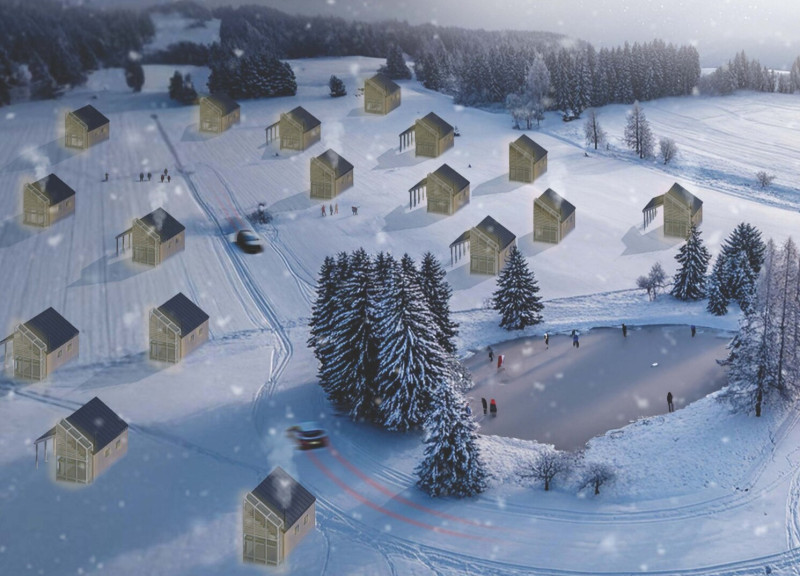5 key facts about this project
At the core of the design is a clear representation of the architect's conceptual vision, articulated through a careful selection of materials and spatial arrangements. The use of locally sourced materials enhances its connection to the environment while also promoting sustainability. Key materials include reinforced concrete, glass, timber, and steel, each chosen for their aesthetic qualities, structural integrity, and environmental performance. The blend of these materials manifests a harmonious balance between contemporary design and traditional elements, creating a narrative that resonates with both the immediate and broader surroundings.
The project’s exterior is characterized by clean lines and geometric forms, which contribute to its modern aesthetic while harmonizing with the local architectural vernacular. The façade incorporates large glass panels, introducing a sense of transparency and fluidity that invites the exterior environment into the interior spaces. This openness not only enhances the spatial quality of the design but also promotes natural light penetration, reducing the need for artificial lighting and fostering a connection between occupants and their environment.
Moreover, the architectural plan emphasizes an innovative approach to layout, prioritizing the user experience through intuitive circulation patterns. Common areas are strategically placed to encourage social interaction, while private spaces are thoughtfully located to ensure privacy and quiet. This balance between communal and individual spaces underscores the project's commitment to fostering a sense of community while addressing personal needs.
Landscaping is another pivotal aspect of the design, integrating green spaces that enhance the aesthetic quality of the project. Outdoor areas are designed to serve multiple functions, from passive recreation to organized gatherings, establishing an outdoor extension of the building. The careful selection of plantings not only complements the architecture but also contributes to biodiversity, promoting an ecological framework within the urban fabric.
What sets this project apart is its emphasis on flexibility. The interior spaces allow for adaptable usage, accommodating future changes in function or occupancy. Movable partitions and modular furniture systems enable users to reconfigure spaces according to their specific needs, reflecting the dynamic nature of contemporary urban living. This forward-thinking approach aligns with the principles of sustainability, extending the building’s lifespan and relevance over time.
In conclusion, this architectural design project transcends mere functionality, aiming to enrich the life of its users while establishing a dialogue with its surroundings. It stands as a testament to the potential of well-considered design to influence how individuals experience and interact with their environment. To explore the intricate details that define this project, including architectural plans, sections, and design ideas, readers are encouraged to dive deeper into the project presentation for a comprehensive understanding of its components and conceptual underpinnings.


























